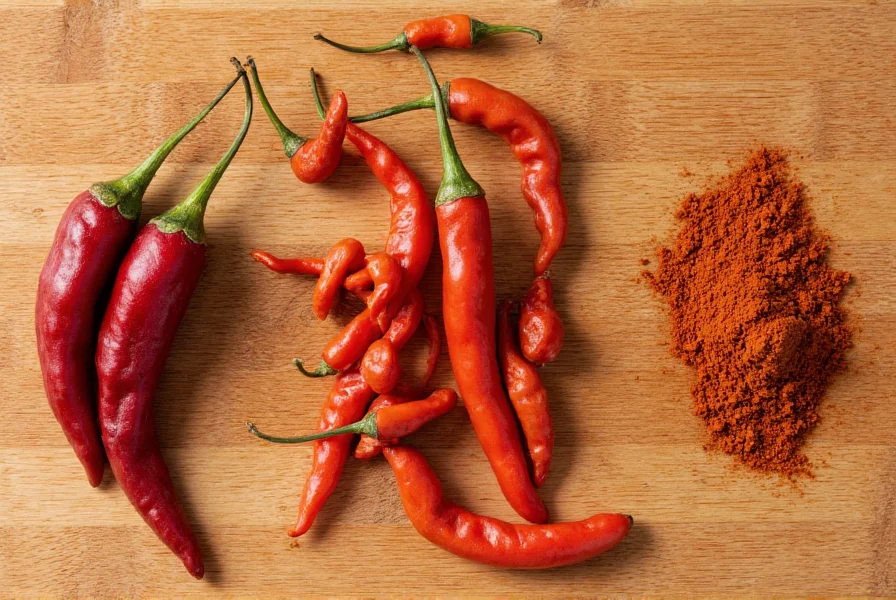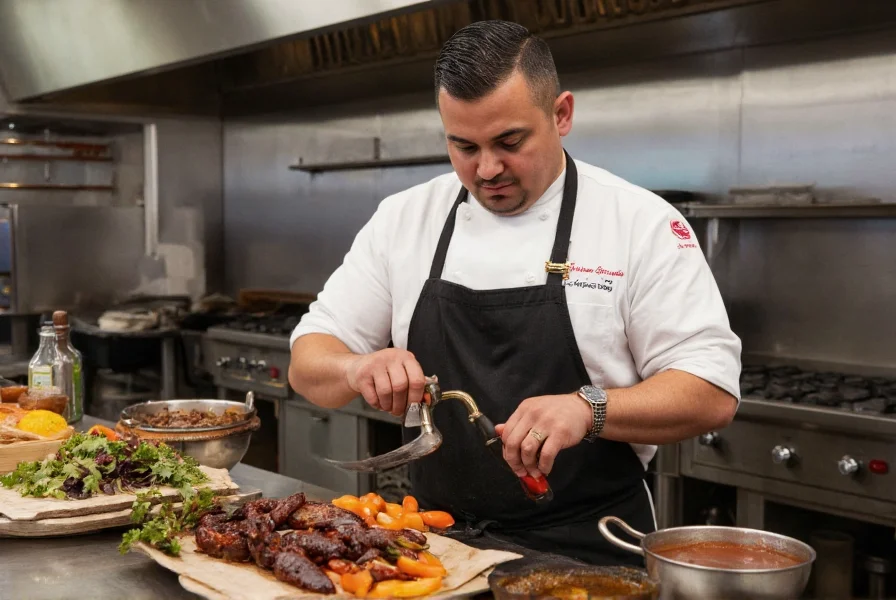Understanding what chipotle chili truly is begins with recognizing its transformation process. Unlike fresh peppers, chipotles undergo a meticulous smoking and drying procedure that concentrates flavors while developing earthy, leathery notes. The Náhuatl word “chipotl” literally means “smoked chili,” reflecting its ancient preparation method dating back to pre-Hispanic civilizations in Mesoamerica.
| Characteristic | Detail |
|---|---|
| Origin | Mexico (traditionally from Morita or Meco varieties) |
| Heat Level | Medium (2,500–8,000 SHU) |
| Flavor Profile | Smoky, sweet, earthy, with subtle fruitiness |
| Common Forms | Whole dried, canned in adobo sauce, powdered |
The Transformation Process: From Jalapeño to Chipotle
The journey from green jalapeño to chipotle involves precise agricultural and processing techniques. Farmers allow jalapeños to fully ripen on the vine until they turn deep red – a stage often missed in commercial fresh pepper production. These mature peppers then undergo a 3–10 day smoking process using regional woods like oak or hickory, which imparts the signature smokiness while preserving the fruit.
Two primary varieties exist in the marketplace:
- Meco (or Tipico) – Light tan color, more intense smokiness, often sold whole dried
- Morita – Darker reddish-brown, slightly fruitier, typically found canned in adobo

Flavor Chemistry and Culinary Applications
The magic of chipotle chili flavor profile comes from chemical changes during smoking. Capsaicin (the heat compound) remains stable while volatile compounds develop complex aromas. The Maillard reaction creates new flavor molecules, explaining why chipotles taste fundamentally different from simply dried jalapeños.
Chefs leverage these properties in specific ways:
- Sauces and marinades – Canned chipotles in adobo provide instant depth
- Dry rubs – Chipotle powder adds smokiness without moisture
- Bean dishes – Whole rehydrated chipotles infuse subtle heat
- Chocolate pairings – Traditional Mexican mole technique
Nutritional Properties and Storage
While researching smoked jalapeño nutritional benefits, note that chipotles retain capsaicin’s metabolic advantages while concentrating vitamins through dehydration. One dried chipotle (5g) typically contains:
- 15 calories
- 1g fiber
- 57% daily vitamin C
- Significant vitamin A and iron
Proper storage maintains quality: keep dried chipotles in airtight containers away from light for up to 1 year. Canned varieties last 6 months refrigerated after opening. For long-term preservation, freeze whole dried peppers.

Substitutions and Common Mistakes
When seeking a chipotle chili powder substitute, understand that no single alternative replicates both smoke and heat. Best approaches include:
- Smoked paprika + cayenne (2:1 ratio) for powder applications
- Chipotle hot sauce for liquid-based recipes
- Guajillo peppers + liquid smoke for whole pepper dishes
Avoid common pitfalls like overusing chipotles (their flavor intensifies during cooking) or confusing them with similar peppers. Chipotles differ significantly from regular jalapeños – the smoking process creates entirely new flavor compounds that green jalapeños lack, making chipotle chili vs jalapeño comparisons misleading.
Traditional and Modern Culinary Uses
Authentic Mexican cuisine uses chipotles in specific regional preparations:
- Oaxacan mole negro – Combines with chocolate and multiple chilies
- Veracruz-style adobo – Marries chipotles with vinegar and spices
- Central Mexican stews – Provides background heat without overwhelming
Contemporary chefs innovate with how to use chipotle peppers in adobo beyond traditional applications:
- Infused oils for finishing dishes
- Compound butters for grilled meats
- Unexpected pairings with fruit desserts
- Cocktail modifiers for smoky margaritas
Frequently Asked Questions
What's the difference between chipotle and smoked paprika?
Chipotle comes specifically from smoked jalapeños, offering distinct fruitiness and moderate heat (2,500–8,000 SHU). Smoked paprika derives from smoked red peppers with milder heat (100–2,500 SHU) and less complex flavor. While both provide smokiness, they're not direct substitutes in recipes requiring authentic chipotle characteristics.
Can I make chipotle chili at home?
Yes, but requires patience and proper equipment. Start with fully ripened red jalapeños, then smoke at 200°F for 8–12 hours using hardwood chips. The peppers should become leathery but not brittle. Home smoking won't perfectly replicate commercial chipotles due to specialized kilns and wood blends, but produces excellent results for personal use.
Why are some chipotles darker than others?
Color variation indicates different processing methods and pepper varieties. Morita chipotles (darker, reddish-brown) are smoked for shorter periods and often canned in adobo. Meco chipotles (lighter tan) undergo longer smoking, developing deeper smokiness. Darker color doesn't necessarily mean hotter – heat depends more on the original jalapeño's capsaicin levels.
How do I reduce chipotle's heat without losing flavor?
Remove seeds and inner membranes before use, as capsaicin concentrates there. For canned chipotles, rinse briefly to remove excess adobo sauce. When using powder, start with half the recommended amount. Pair with dairy (yogurt, cheese) or sweet elements (honey, fruit) which chemically counteract capsaicin without masking smoky notes.
Are chipotle peppers and chipotle powder the same thing?
No – chipotle peppers refer to the whole smoked jalapeños (dried or canned), while chipotle powder is made by grinding dried chipotles. Powder lacks the textural dimension of whole peppers and often contains additional spices. For authentic chipotle chili flavor profile, whole peppers provide more complex results, though powder offers convenience for dry rubs and quick applications.











 浙公网安备
33010002000092号
浙公网安备
33010002000092号 浙B2-20120091-4
浙B2-20120091-4